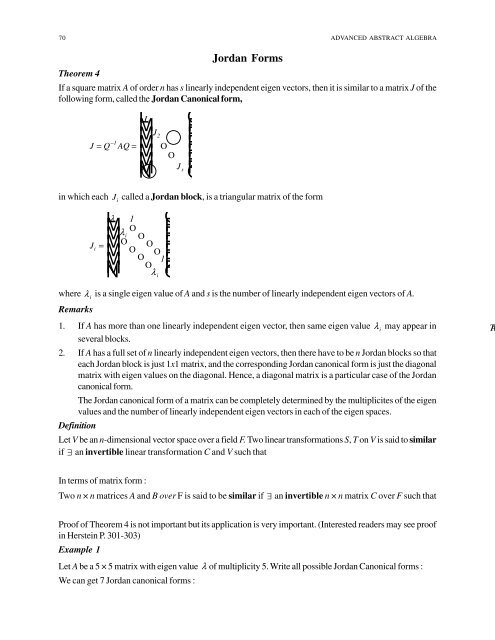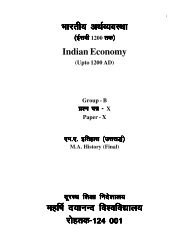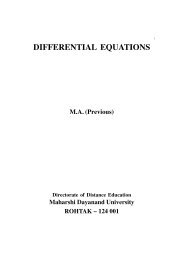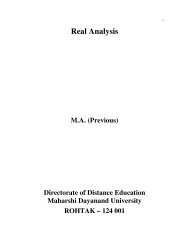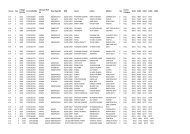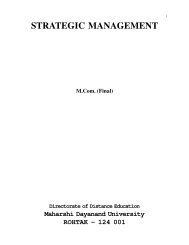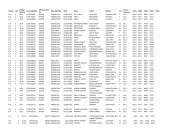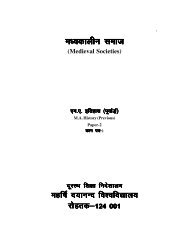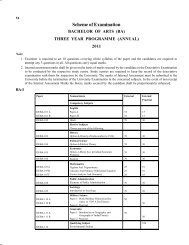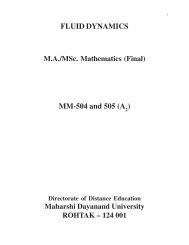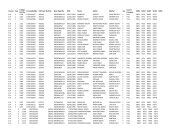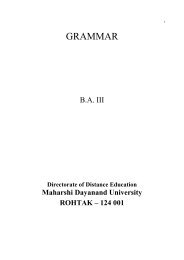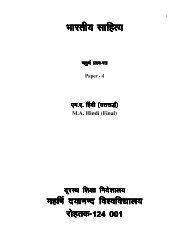Advanced Abstract Algebra - Maharshi Dayanand University, Rohtak
Advanced Abstract Algebra - Maharshi Dayanand University, Rohtak
Advanced Abstract Algebra - Maharshi Dayanand University, Rohtak
Create successful ePaper yourself
Turn your PDF publications into a flip-book with our unique Google optimized e-Paper software.
70<br />
ADVANCED ABSTRACT ALGEBRA<br />
Theorem 4<br />
NM<br />
J s<br />
QP<br />
Jordan Forms<br />
If a square matrix A of order n has s linearly independent eigen vectors, then it is similar to a matrix J of the<br />
following form, called the Jordan Canonical form,<br />
LJ<br />
1<br />
M<br />
O<br />
J<br />
P<br />
2<br />
−1<br />
J = Q AQ = Ο<br />
Ο<br />
in which each J i<br />
called a Jordan block, is a triangular matrix of the form<br />
J i<br />
=<br />
L<br />
NM<br />
λ i<br />
Mλ<br />
i<br />
1<br />
Ο<br />
Ο<br />
Ο Ο Ο Ο Ο 1 Ο<br />
λ<br />
i<br />
O<br />
QP<br />
where λ i<br />
is a single eigen value of A and s is the number of linearly independent eigen vectors of A.<br />
Remarks<br />
1. If A has more than one linearly independent eigen vector, then same eigen value λ i<br />
may appear in<br />
several blocks.<br />
2. If A has a full set of n linearly independent eigen vectors, then there have to be n Jordan blocks so that<br />
each Jordan block is just 1x1 matrix, and the corresponding Jordan canonical form is just the diagonal<br />
matrix with eigen values on the diagonal. Hence, a diagonal matrix is a particular case of the Jordan<br />
canonical form.<br />
The Jordan canonical form of a matrix can be completely determined by the multiplicites of the eigen<br />
values and the number of linearly independent eigen vectors in each of the eigen spaces.<br />
Definition<br />
Let V be an n-dimensional vector space over a field F. Two linear transformations S, T on V is said to similar<br />
if ∃ an invertible linear transformation C and V such that<br />
TA<br />
In terms of matrix form :<br />
Two n × n matrices A and B over F is said to be similar if ∃ an invertible n × n matrix C over F such that<br />
Proof of Theorem 4 is not important but its application is very important. (Interested readers may see proof<br />
in Herstein P. 301-303)<br />
Example 1<br />
Let A be a 5 × 5 matrix with eigen value λ of multiplicity 5. Write all possible Jordan Canonical forms :<br />
We can get 7 Jordan canonical forms :


